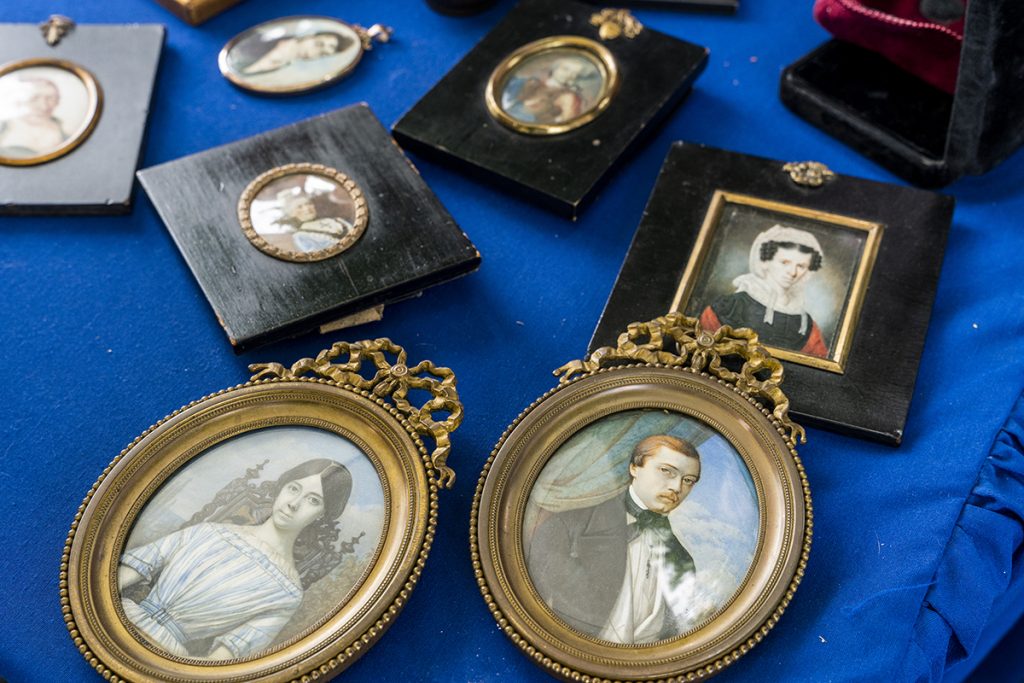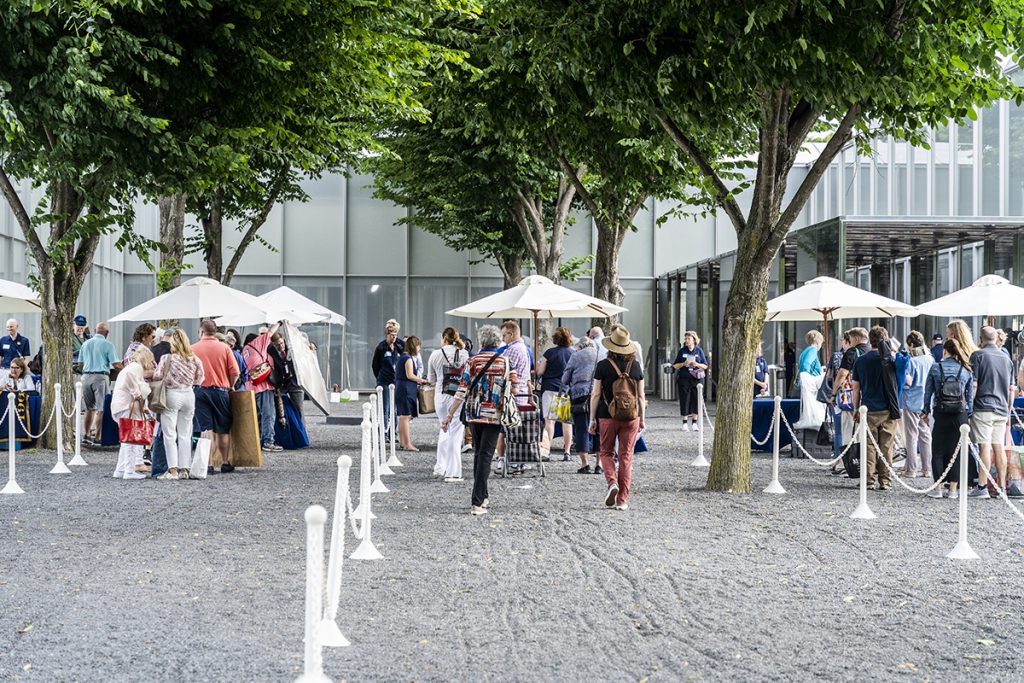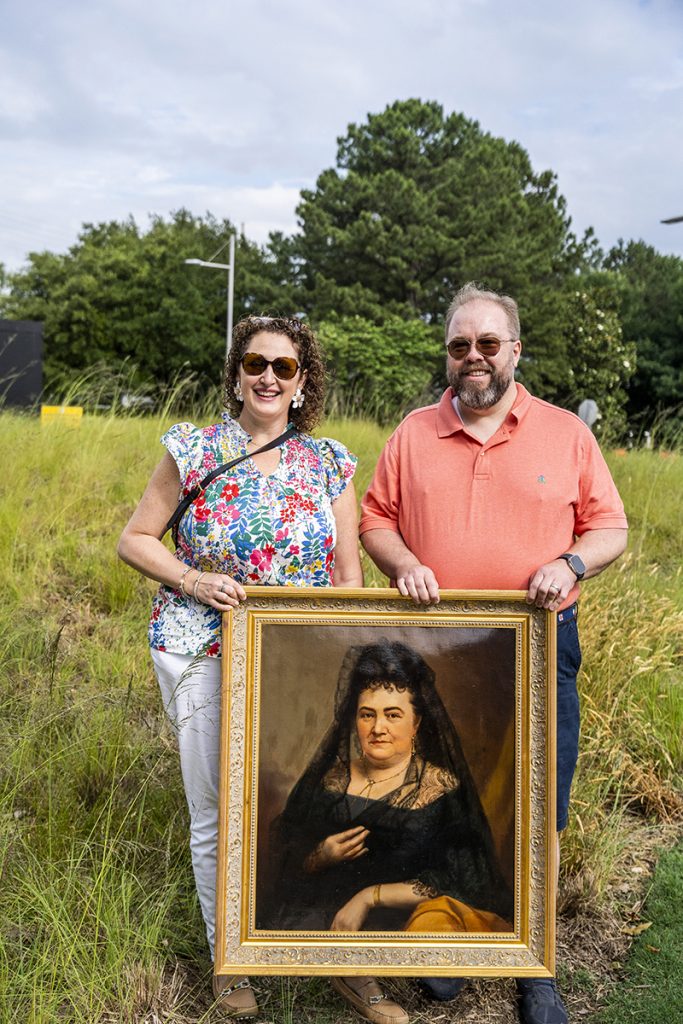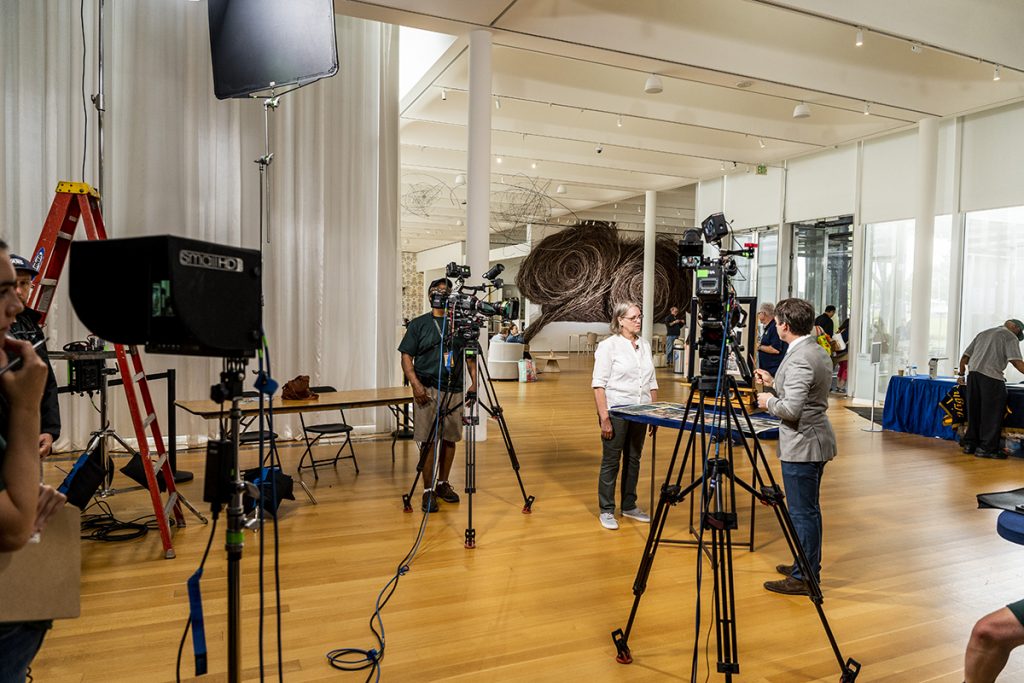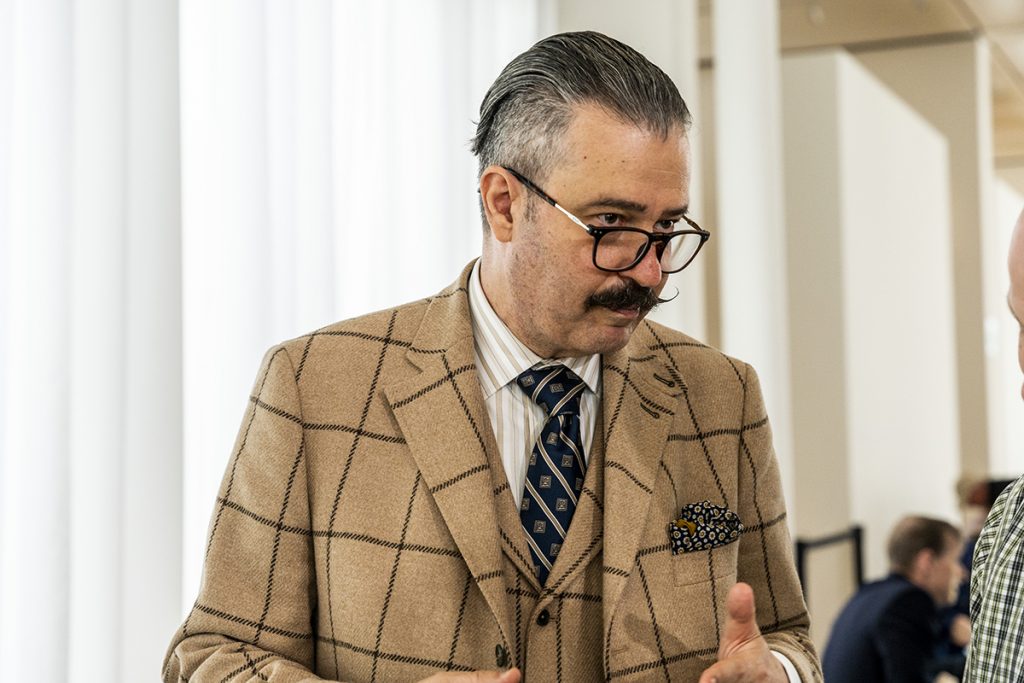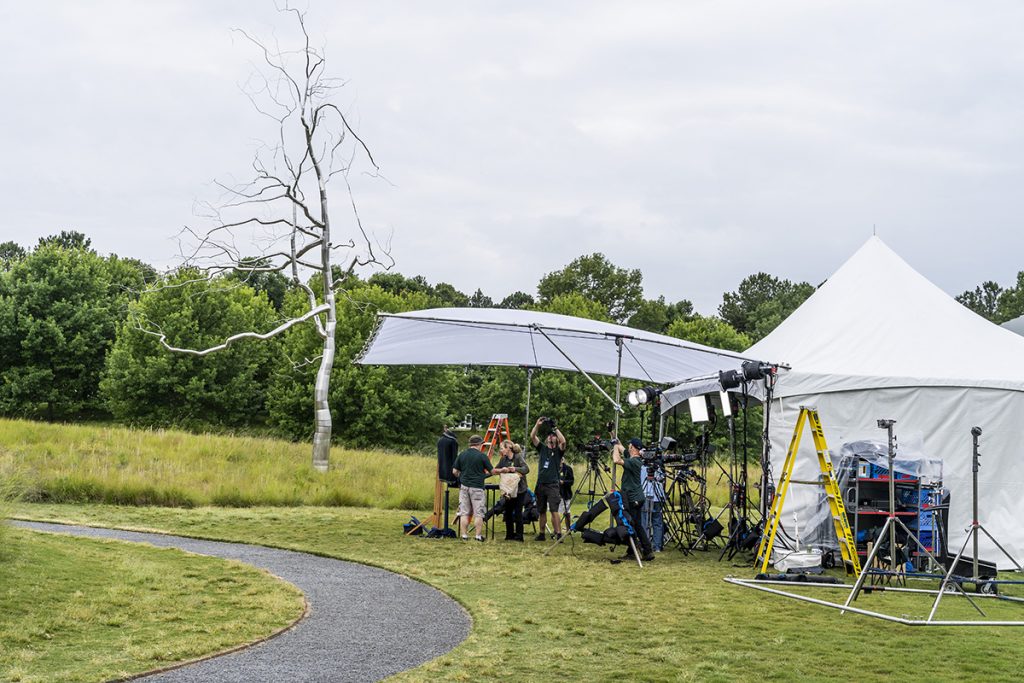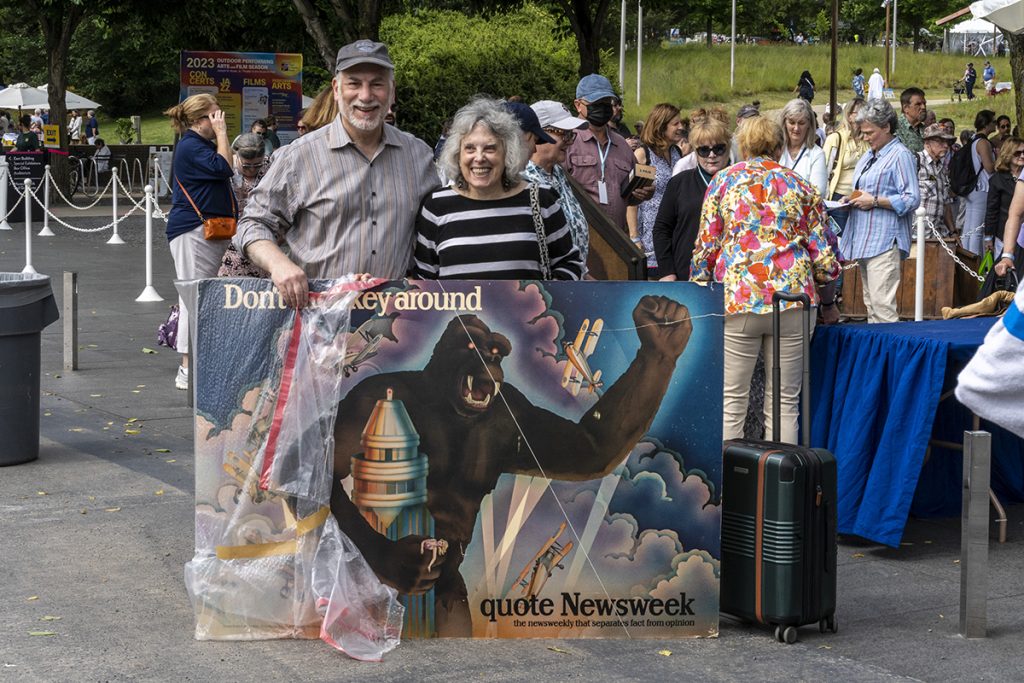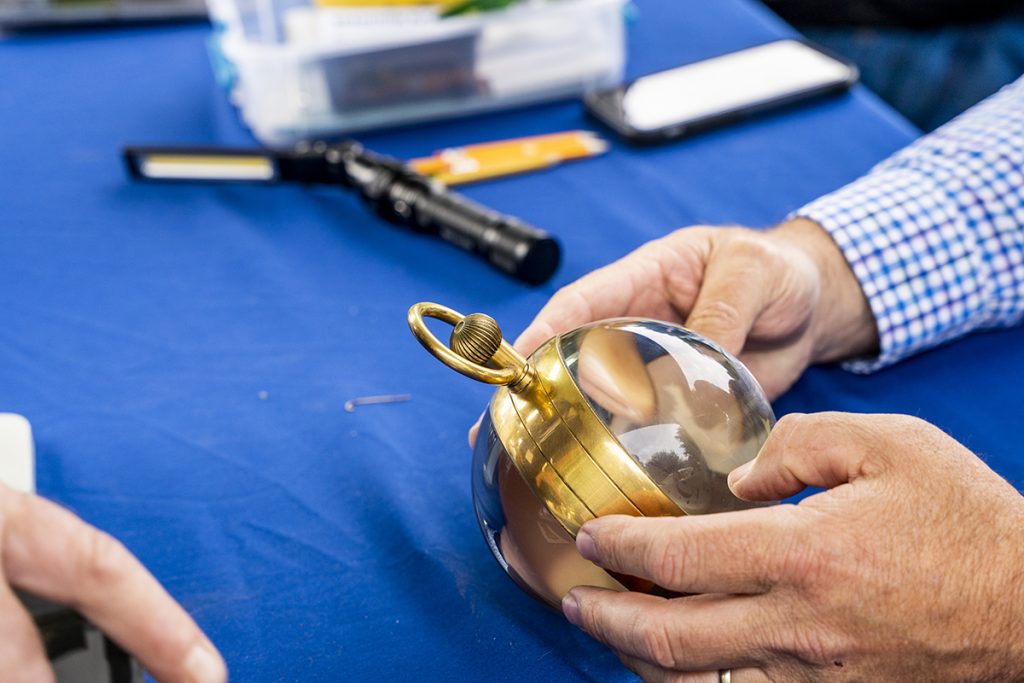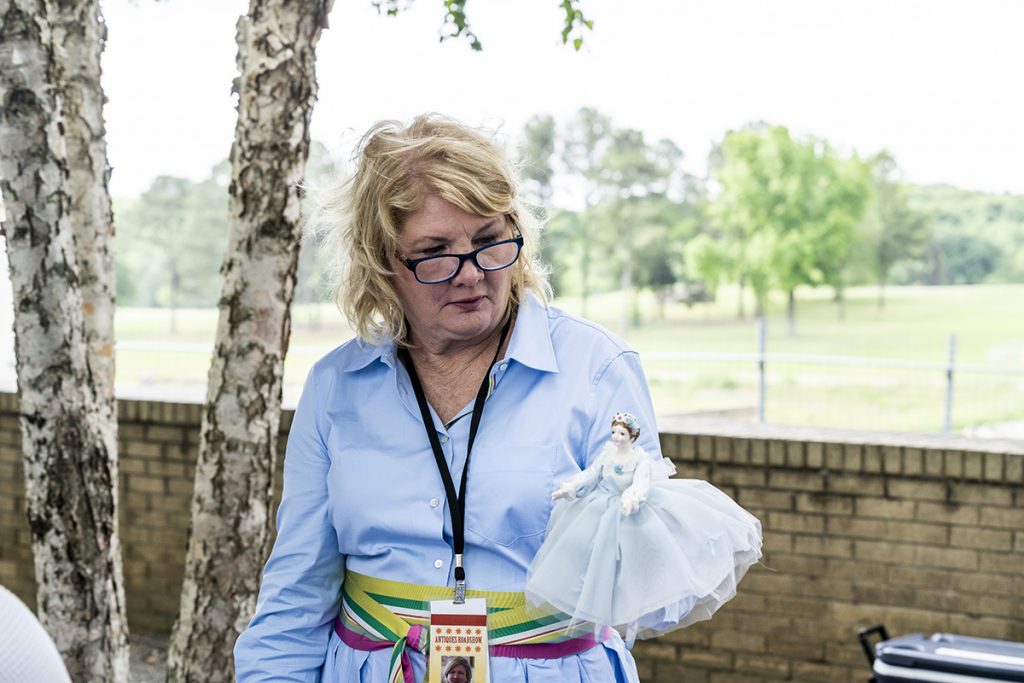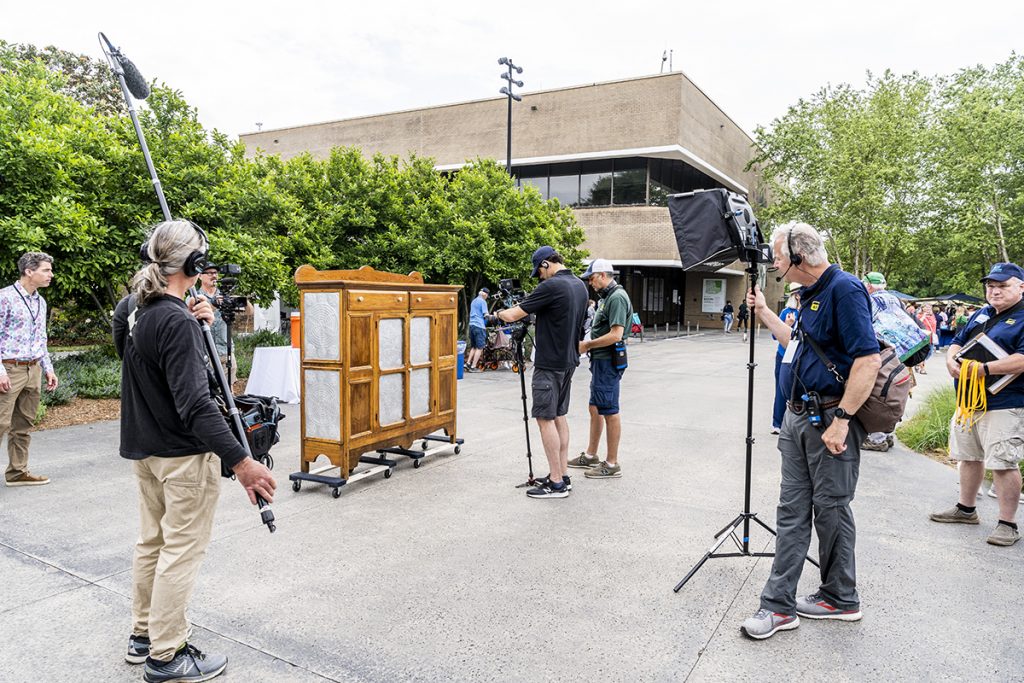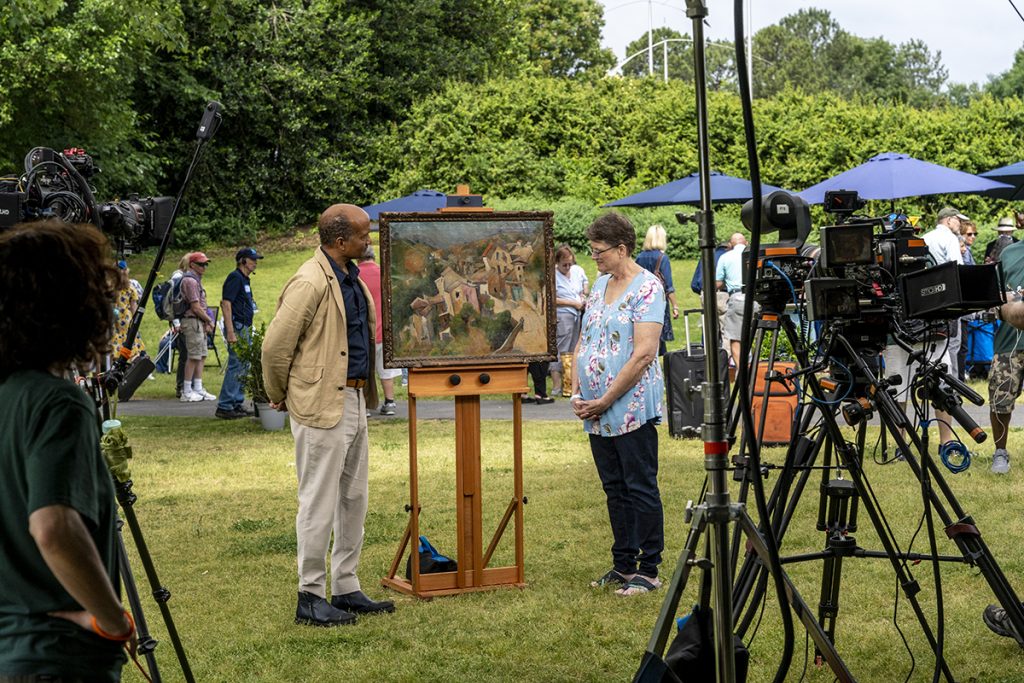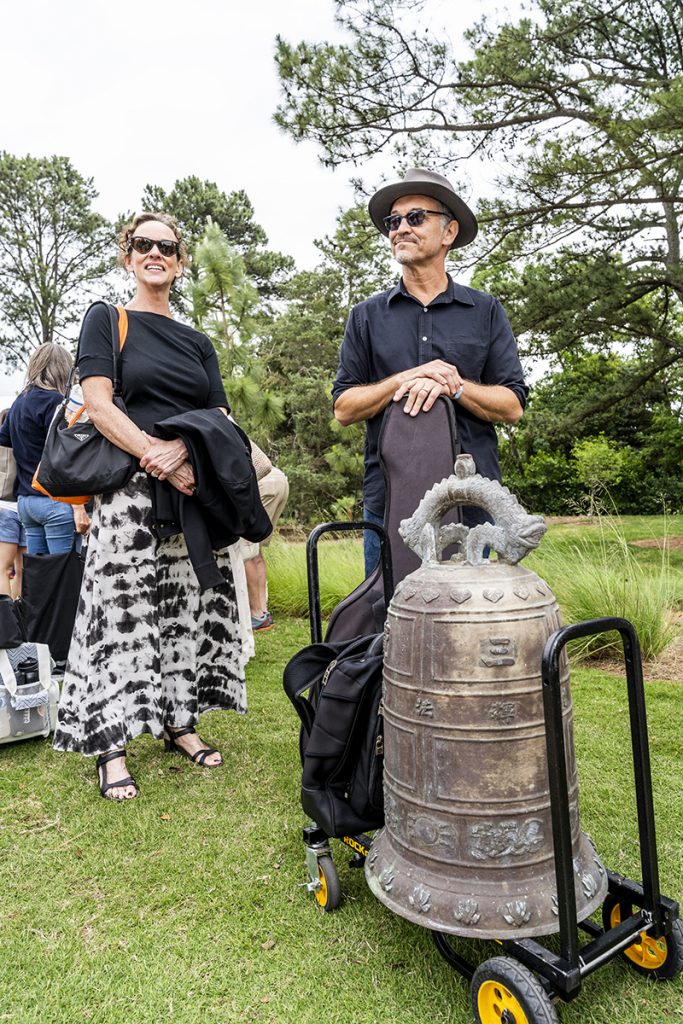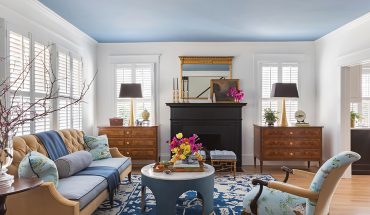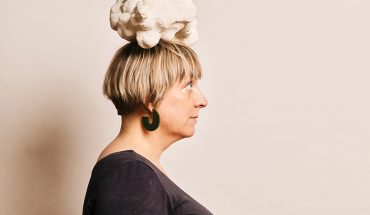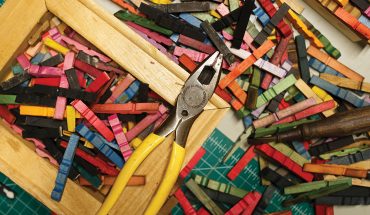Behind the scenes of the popular PBS television series, which made a stop at the North Carolina Museum of Art for its 28th season.
by Colony Little | photography by Bryan Regan
The items we own and surround ourselves with tell a story about who we are and what’s important to us — and sometimes they’re worth some money, too. The longtime PBS television series Antiques Roadshow offers viewers a little bit of both, appraising cherished possessions while uncovering the compelling, heartfelt stories behind them. “People from all walks of life come to the show, and every person owns something really interesting, maybe valuable too,” says executive producer Marsha Bemko. “That is a Roadshow fantasy for all of us.
Last May, the Antiques Roadshow crew came to the North Carolina Museum of Art to film for its 28th season. In the wee hours of the morning, the crowd gathered, proudly carting framed artworks, antique furniture, vintage maps, jewelry, sculptures, vases and way more, all holding onto a glimmer of hope that one of their cherished items could fund an early retirement, a college education or a nice vacation. (Instead, quite a few had to settle for a free cup of coffee.)
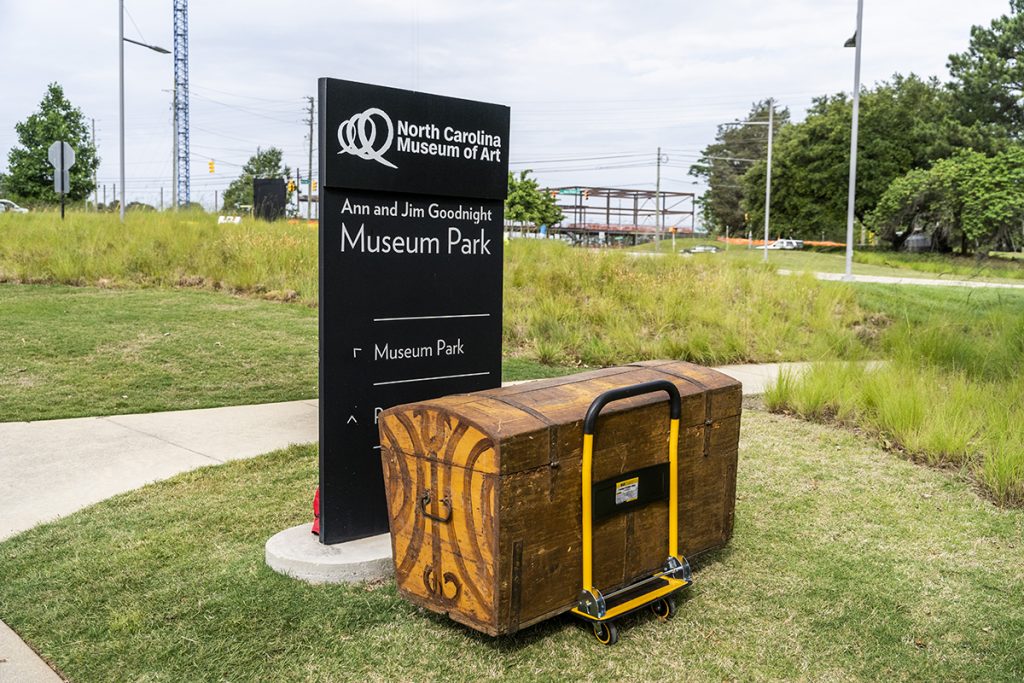
Along with WALTER magazine creative director Laura Wall and photographer Bryan Regan, I got to attend filming to get a behind-the scenes look at the show. This was a full circle moment for me: When Antiques Roadshow originally debuted in the United States, I worked for the lead corporate sponsor, and from the moment the first episode aired, I was absolutely hooked by the stories, energy and excitement of the guests.
I always wanted to be a volunteer for filming, a coveted spot among my work colleagues at the time, but never had the chance. So needless to say, I was thrilled to walk the grounds with Laura and Bryan to watch the day unfold in Raleigh.
The Roadshow production team runs a tight ship, with a process that begins well before filming begins. A few months beforehand, PBS holds a lottery to distribute up to 2,000 free tickets to the event. Each ticket accommodates up to two guests and two items to review. If wannabe guests don’t get a ticket through the lottery, they are given an opportunity to volunteer — though when we showed up to the filming, there were even 400 people on the volunteer waitlist.
The day of, preparations began bright and early at 6:00 a.m., and the first appraisals started at 7:30. When guests arrived at the NCMA, they were escorted through a “triage” process in a large tented area near the museum entrance, where a general appraiser made a preliminary survey of their item and directed them to one of the 65 specialist appraisers on site representing 23 subject areas.
Some items were appraised inside the West Galleries, while most of the appraisals took place in tented areas around the museum. Laura had brought a large wooden seat believed to be a Jacobean throne chair from the 1700s. It was too large to carry around, so Laura was instructed by volunteers to drive the chair to an area to stage the item.
While Bryan and I waited, a woman standing next to a large portrait of a Spanish woman caught our eye. She explained that her husband had gotten it as a gift from his godfather a few years ago, but “it has always been a bit of a mystery.” According to her husband, his godfather had bought it at an estate sale in the 1970s for $85, then hired a conservator to refurbish it.
The conservator had estimated that the painting dated to the 1700s. They never had the piece officially appraised, and he had been trying to secure tickets to previous Roadshow tours in Richmond, Virginia, and Charleston, South Carolina, so this was his lucky shot. We wished them well as we parted ways to walk the grounds, stopping into various tents to observe appraisals.
To our excitement, we ran into the couple again as they were escorted from triage to the next step: a booth manned by appraisers Aaron Bastian from Bonhams in San Francisco and Eric Hanks from the M. Hanks Gallery in Fullerton, California. Hanks asked the couple questions about the portrait, teasing out its provenance, then conferred with his partner.
Bastian believed the piece was actually from the 19th century; he couldn’t detect any signs that would indicate that it was older. The appraisers weighed the pros and cons of pursuing additional conservation efforts, but suggested it could be cost prohibitive. It wasn’t news the couple hoped for, but that was OK with them. “I’ll still love the piece forever,” said the husband.
If an item has a unique story or is deemed of value, an appraiser will flag one of four producers to pitch a prospect for filming, though the items’ owners don’t get much more information — they want to keep the air of mystery in place for filming. Producers then further narrow down the objects that will be filmed, and if selected, the guests bring their item to one of two multicamera filming tents.
One was set up near the Roxy Paine stainless steel tree sculpture, and while we were allowed to observe, we had to be super quiet. The crew films up to 150 appraisals throughout the day, and this episode will air on April 1.
While the filming is fascinating, the magic of the day comes from outside the tents, in the excitement of the guests. “Even if you watch the show you can say, ooh, I have one like that…, that common humanity we all have, which is so rare in today’s world, happens here,” says Bemko. “The secret sauce is that we’re all interested in the same things; we all want to understand more about what we own.” As we walked the grounds, spirits were high as people eagerly shared and listened to each other’s stories about their cherished items.
We wrapped our time with the Roadshow team with a visit from Ken Farmer, a specialist in folk art, furniture and musical instruments in Charlottesville, Virginia, who has appeared on the since its inception in 1996. He took the time to check out Laura’s throne chair. Farmer inspected the piece, bypassing its distinctive carvings, shape and flat seat, all common characteristics of the Jacobean style. He noticed three features: a pair of initials carved into the chair, its size and an oddly placed hinge. “It may be from a rural region because period chairs from the big castles were made to be much larger, and this is a smaller version,” he said.
The hinge was a bit more mysterious, so Farmer deferred to the group of guests that had formed around the piece to solicit our guesses about its function. “Now what piece of furniture shaped like this would need to have a hinge or a lid on the seat?” Farmer asked the group. He pointed to the underside of the seat of the chair, where the hinge was placed, and directed his gaze toward all of us, who were looking at one another. Finally someone sheepishly guessed, “A toilet?” The crowd erupted in laughter. A commode certainly wasn’t the kind of throne Laura was hoping for!
Turns out he was playfully leading us all into a trap — Farmer quickly admitted he was just pulling her leg. The hinge more likely had come from a previous repair. “I think some of the pieces did not start out together, but it is a nice chair in the Jacobean style,” he told her. He noted that a dealer in English antiques would likely sell the piece for $1,000 to $1,500, but at an auction in the United States the piece would likely fetch between $400 and $800.
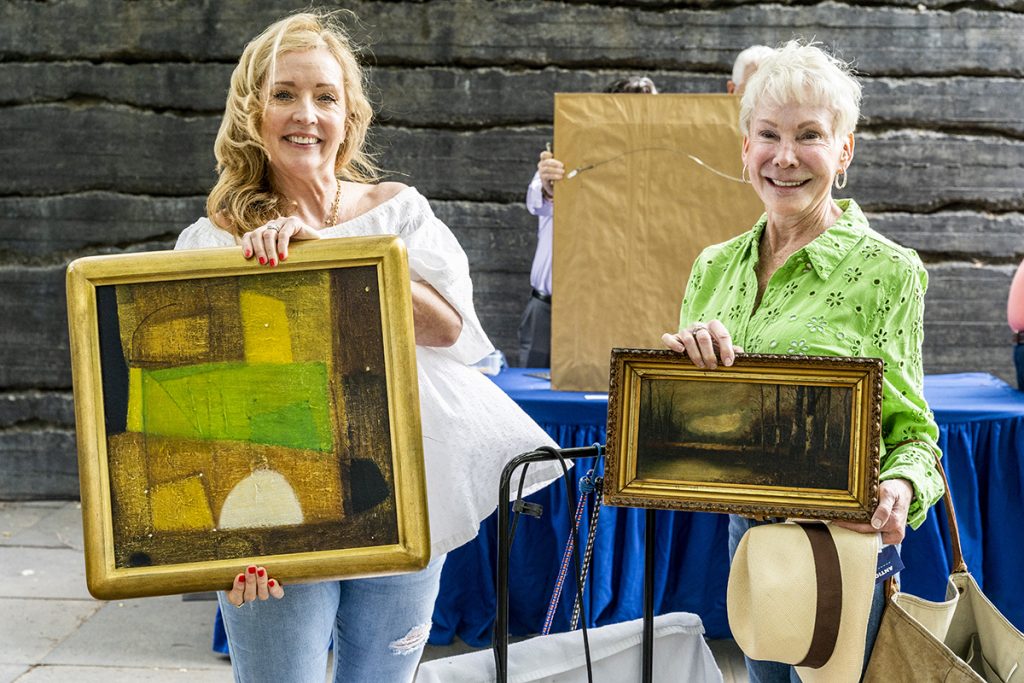
In addition to having poker faces and a sense of humor, appraisers must have excellent detective skills. “The first thing I always say is, ‘what’s been done to this, and what is this telling me?’” said Farmer. “The key is to never be overwhelmed by the details. You have to look at it, make it explain itself to you.”
Guests having their items appraised are given the option to stop by a feedback booth where visitors can film their thoughts with the appraisal process. The area turned into an impromptu roundtable discussion among guests regaling one another on their experience.
One couple had bought a silk scarf from the 1980s for $5 that is now worth $300. Another couple held a piece they thought was a Toulouse-Lautrec; alas, it was not. But like the first couple we met, this duo was undeterred: “We got it just before we got married 25 years ago and we love it.” It’s the stories and the connections these pieces engender between guests and viewers — not their monetary value — that’s at the heart of the show’s enduring success.
This article originally appeared in the March 2024 issue of WALTER magazine.

